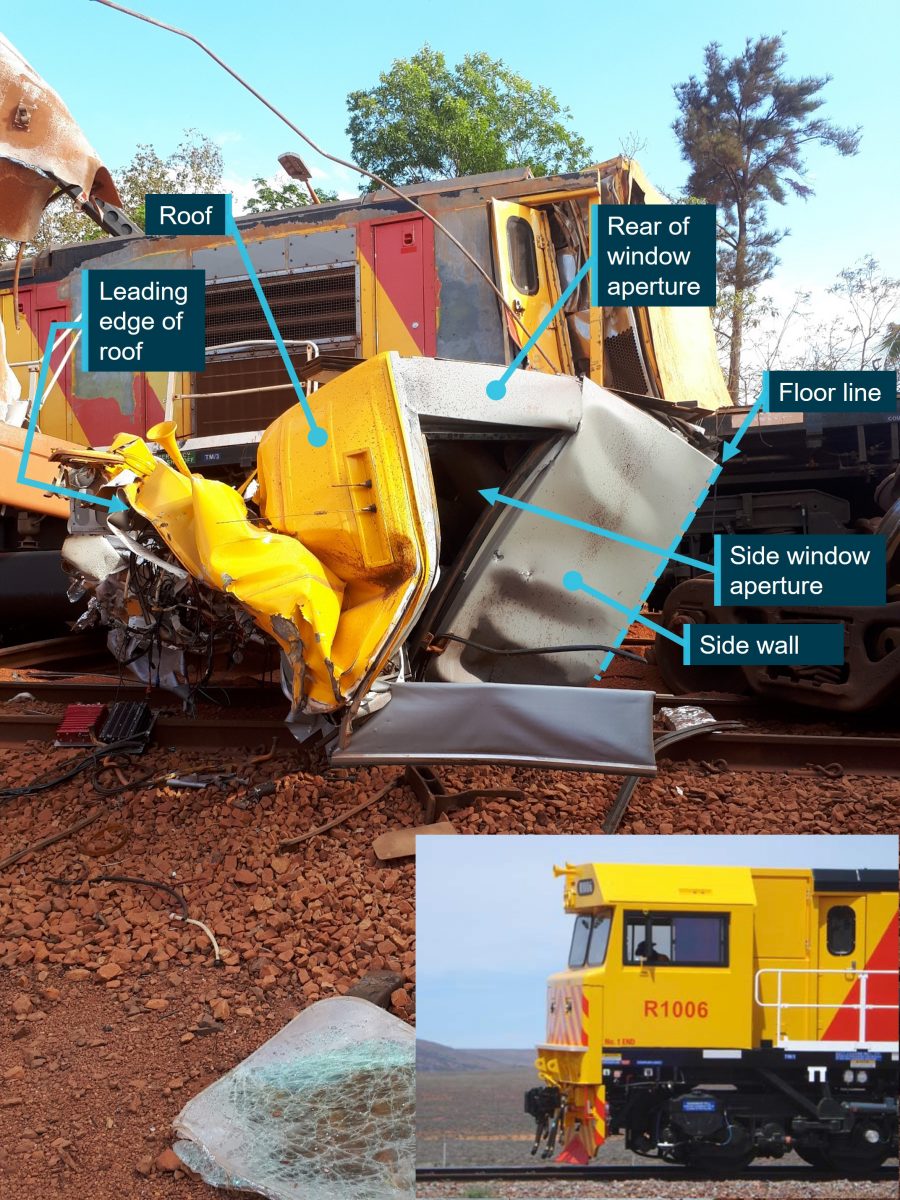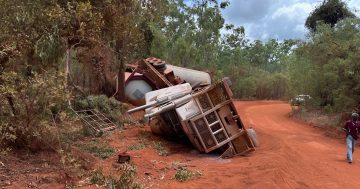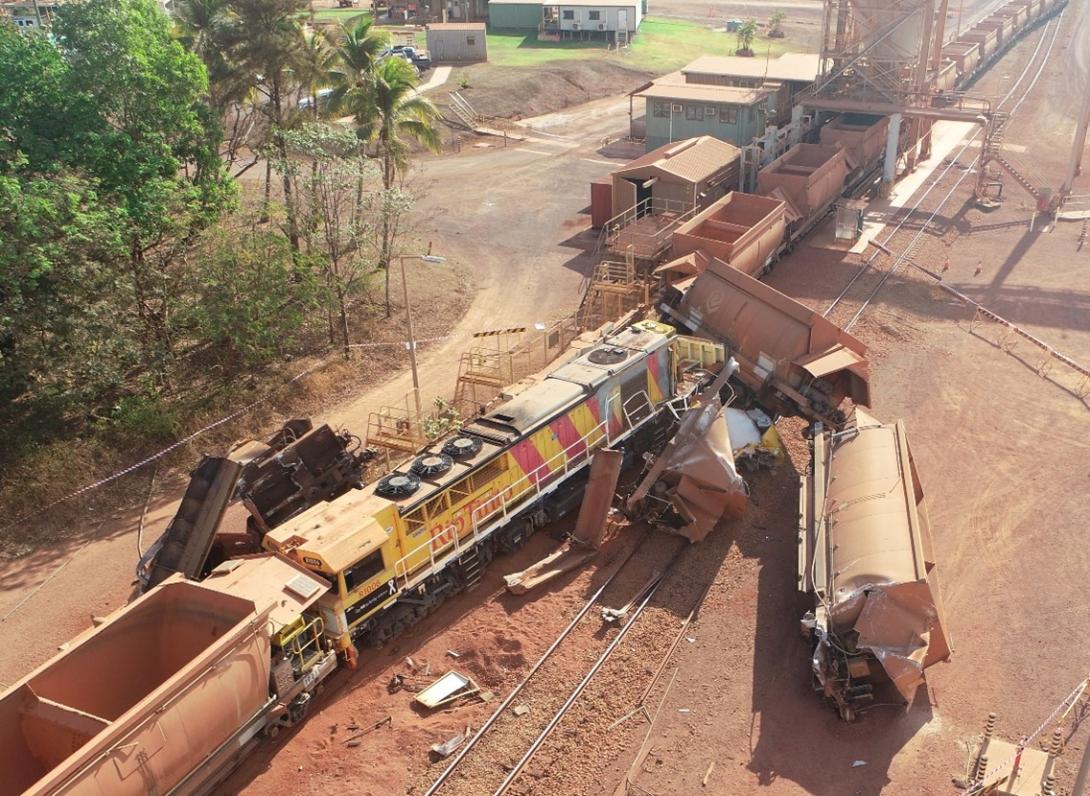
The scene after the train crash at Rio Tinto Weipa in 2019.
THE Australian Transport Safety Bureau has handed down its findings from a 2019 train incident at Rio Tinto’s Weipa operations.
The investigation into an empty ore train’s collision with stationary wagons has led to the operator and Australia’s rail standards board taking a number of safety actions.
The report said the driver was unable to slow the bulk ore train as it approached a bauxite loading station north of Weipa, resulting in a collision with a rake of stationary wagons on 22 September 2019.
The locomotive and four wagons from the stationary rake derailed in the collision.
The modular driver’s cabin separated from the main body of the locomotive and was substantially damaged, and the driver was initially trapped inside, but sustained only minor injuries.
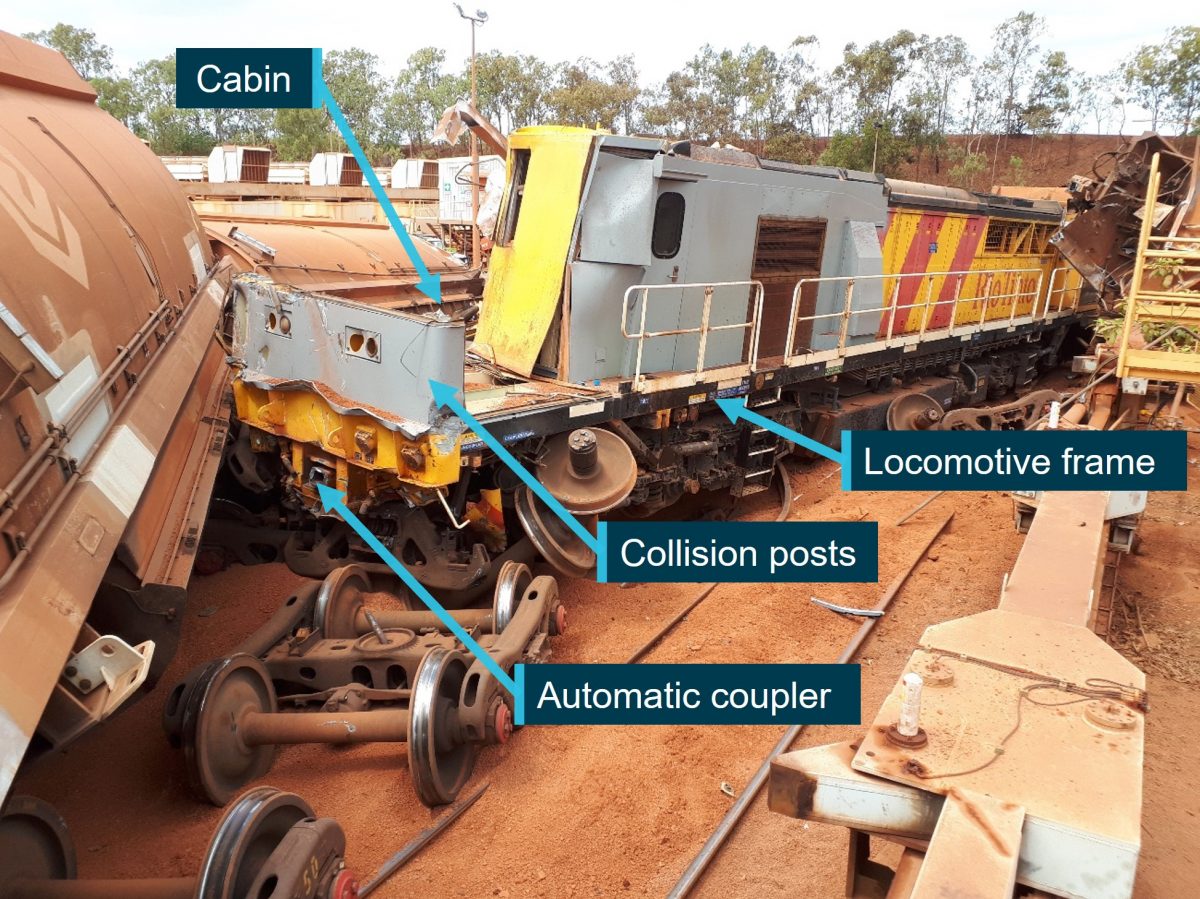
The ATSB’s final report, released at the conclusion of a systemic-level investigation into the accident, details 10 safety factors, which either contributed to the accident, or increased risk.
These include three safety issues, which have now been addressed by the operator RTA Weipa Pty Ltd, the Rail Industry Safety and Standards Board (RISSB), and the locomotive’s design owner.
“The ATSB’s investigation found the driver was not able to slow the train as there was no continuity of air through the train’s brake pipe,” chief commissioner Angus Mitchell said.
“This was due to the brake pipe cock not being opened when the locomotive and rake were coupled together, prior to the accident journey.”
Compounding this, the ATSB found a brake continuity test was not performed during the pre-departure check – a missed opportunity to detect the issue.
“The coupling process being used was inconsistent with the published procedure, and routine audits conducted by the operator did not identify this inconsistency,” Mr Mitchell said.
Additionally, the investigation found the management of change processes was not applied when the end of train telemetry system became inoperable, and the Lorim Point dump station became automated.
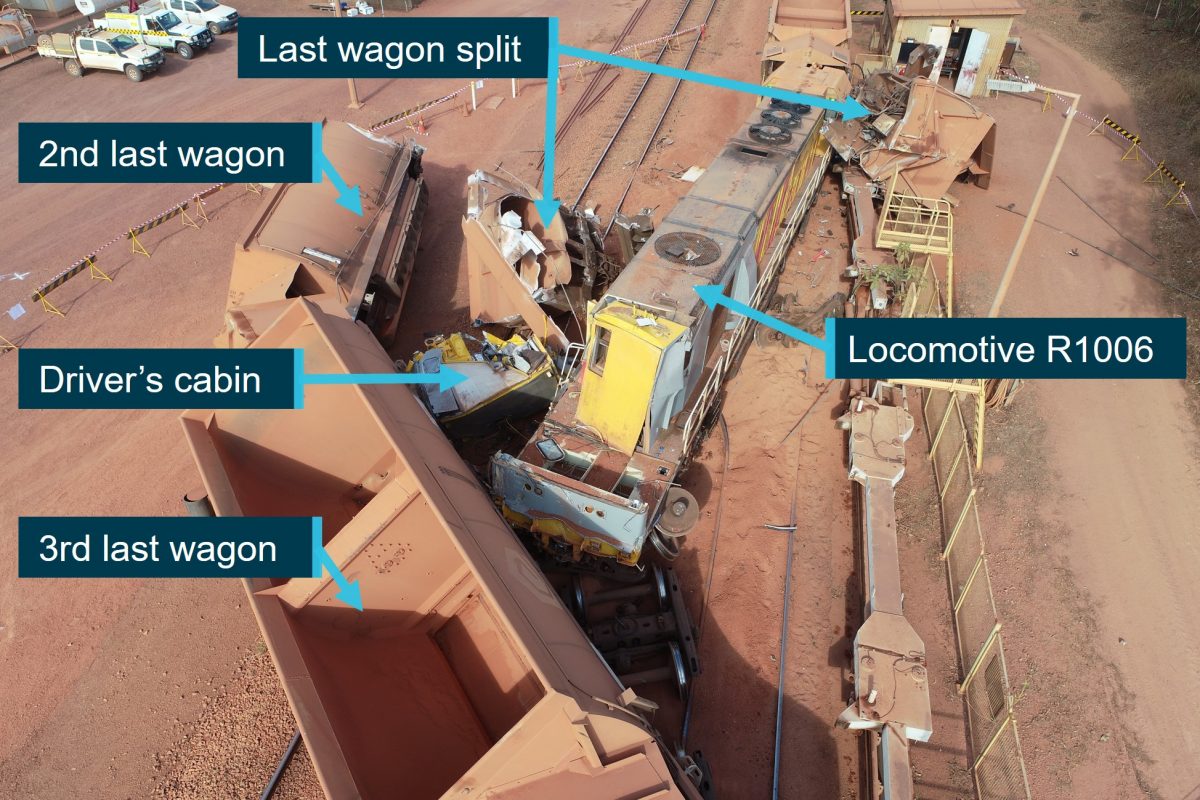
“This accident highlights the importance of ensuring that published rules and procedures are followed, through an effective monitoring and audit process, which is fundamental to rail safety,” Mr Mitchell said.
“Likewise, changes to rail operations need to be adequately managed to identify new or altered risks.”
As a result of the accident, Rio Tinto Weipa has installed a revised telemetry system to allow drivers to perform brake continuity tests without relying on a second person. In addition, the operator has introduced safety improvements to the manual brake continuity testing, and all relevant team members have been re-trained in the test requirements.
The ATSB’s investigation also found the design of the modular driver’s cabin mount was not resilient to frontal impact forces, and the industry standard did not provide design and/or performance standards for modular cabin resilience and retention for locomotive crashworthiness.
Since the accident, RISSB has included modular cabin retention within the update to Australian Standard 7520, which is underway.
Separately, the locomotive’s design owner, Progress Rail, has re-engineered the modular cabin mounts to improve strength, to reduce the risk of cabin separation in the event of a collision.
“One of the ATSB’s primary goals is to encourage safety action to prevent reoccurrences when safety factors are identified, and I welcome the actions taken in response to this accident,” Mr Mitchell said.
A Rio Tinto spokesperson told Cape York Weekly that it had made changes following the incident.
“We note the release of ATSB’s report into the 2019 Weipa train collision,” they said.
“The safety of our people is of paramount importance, and we take the incident and the investigation report findings very seriously.
“As a result of the incident, Rio Tinto Weipa Operations took multiple safety actions, including installing a revised telemetry system to allow drivers to perform brake continuity tests without relying on a second person.
“We also introduced safety improvements to the manual brake continuity testing, and have retrained all relevant team members in the test requirements.”
READ ALSO: The Australian Transport Safety Bureau’s full report
